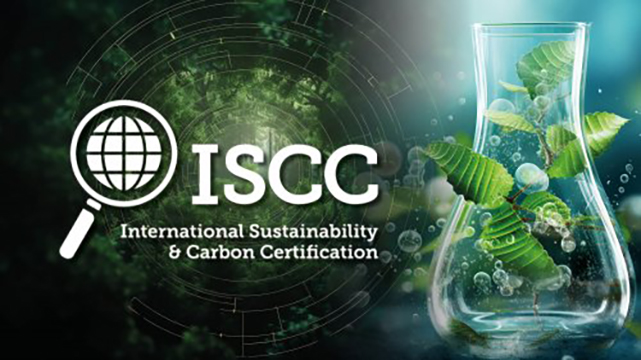More news
- PPG recognised for sustainability progress by FTSE4Good for sixth consecutive year
- Focus on industrial: Powering the energy industry during extreme heat
- Focus on powder coatings: The coatings industry’s transition to PFAS/PTFE-free solut...
- Birla Carbon Plants in USA, Canada, and Spain secure ISCC PLUS Certification
- Songwon awarded platinum level by EcoVadis for its sustainability achievements

Swedish startup FineCell produces dry cellulose powder and hydrogels for the paint, beauty and healthcare industries. PPCJ spoke to Peter Axegård, CEO of FineCell, to find out more about the company’s bio-based additive materials
 Q. How long has FineCell been operating and how did the company come about?
Q. How long has FineCell been operating and how did the company come about?
A. The company was originally established in 2015 by three researchers at KTH Royal Institute of Technology, Stockholm who invented a new process for producing modified cellulose. This work is the scientific base for FineCell today, working on up-scaling of the production process and commercialisation of the product.
Q. What does FineCell hopes to achieve with its latest round of investment and the benefits it could bring to the coatings industry?
A. The aim is to be able to design and build our demo production plant. The activities cover defining optimal process conditions for high process availability, cost-efficiency and defined product properties of relevance for our customers.
Q. What, in your opinion, are the biggest challenges involved with creating bio-based components for paint?
A. Bio-based chemicals often come at a higher cost than established petro-chemical derivatives. Hence, a bio-based material has to offer other benefits than just being bio-based. Actually, we tackle both aspects of the problem:
Our innovative patent protected production process utilises widely available and cheap raw-materials and offers high product yield at low production cost. In addition, our material is a multi-functional ingredient: It stabilises emulsions and dispersions, adjusts the rheology of formulations and enhances the mechanical properties of the paints and coatings (e.g. scratch resistance).
READ MORE:
Q. Are you finding any resistance within the coatings industry, to replacing traditional chemicals? Are people worried about the performance level of the paint decreasing?
A. Replacing traditional fossil-based chemicals, with a long-known performance profile, in complex formulations is always challenging. Of course, our customers will evaluate our material against performance standards. We understand that testing with partners within the paints & coatings industry is necessary to show the added value introduced into formulations using our product.
We are still in an early phase of developing the market within the paints and coatings sector and we are looking to find more partners to strengthen the application development of our product.
Q. Regulations around chemicals are a common headache for paint manufacturers. Does using bio-based ingredients solve this problem, or do you still have to adhere to strict industry legislation?
A. Here we are optimistic. Our product is bio-degradable and non-toxic. Initial work on cosmetics indicates no sensitising effects. Also, there are other speciality cellulose products used in paint and food.
Q. Are there any environmental concerns with FineCell, in terms of the fact that you have to chop down woodland to produce it?
A. We base our production on wood processed in chemical pulp mill using wood from Nordic certified forests. We are however, considering using cellulose from annual plants, such as wheat straw and recycled paper.
Q. Do you have any plans to enter into other sectors or industries?
A. Another large pillar in our marketing strategy is the personal care sector. Here, the properties of our products such as stabilising dispersions and emulsions and modifying the rheology of e.g., creams and lotions are highly interesting for our customers. In addition, there is a high demand from the end customers for fully bio-based personal care products.
We also investigate other industries, such as biomedicals, where 3D-bioprinting is a hot topic, or printed electronics, where thin films made from our product could be used as a substrate.
READ MORE:
“The number one challenge for the coating industry today is decarbonisation”
Q. Following on from the demo production plant, full commercial production is planned for 2027. Which geographic regions do you anticipate selling to and do you have any idea of the quantities you will aim to produce?
A. We aim to sell worldwide. As our cellulose product can be shipped in dry form, we can keep shipping costs low, even if we only produce in Northern Europe in the beginning. We aim to ramp up production to roughly 300 tonnes per year on dry base. Our product is typically used in low concentrations (~1 %) in formulations. Hence, that capacity will enable us to deliver material to several customers across different industries. After 2027, we aim for even larger production, maybe even in other geographies.
Q. Do you have any plans to produce other products for the paint and coatings industry?
A. Our product is quite versatile, and our innovation pipeline is filled with projects to further modify the properties of our product to further increase value in our customers’ formulations. So, yes, the paint and coating industry will see more products made by FineCell.
Q. Finally, are there any emerging trends that you think will be at the forefront of the industry in a few years’ time, which will have an impact on your work?
A. We will work with state-of-the-art systems and equipment in our demo production plant, this also includes that our production will use the latest big data and AI/Machine Learning tools to ensure the best performance and product quality.








